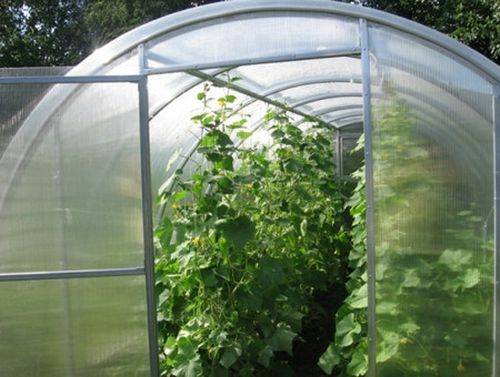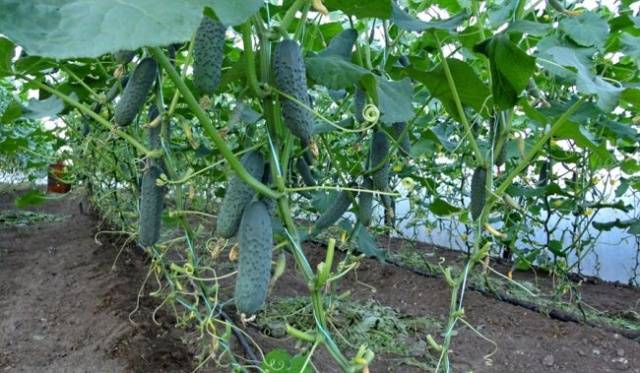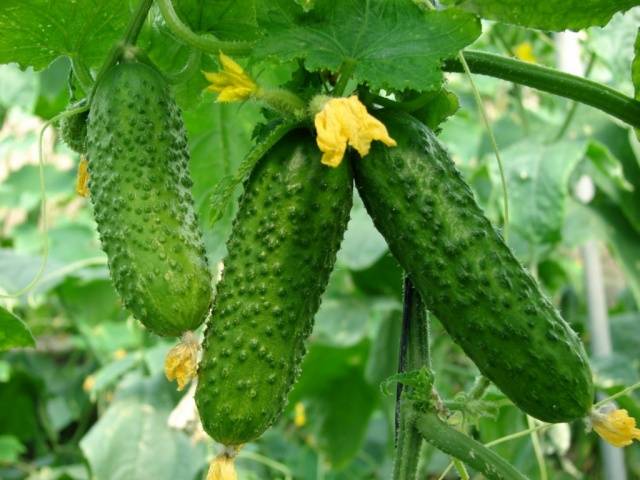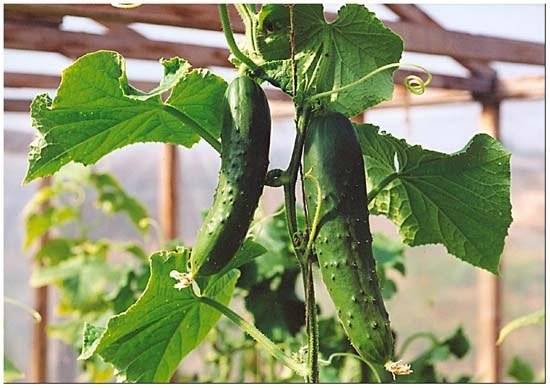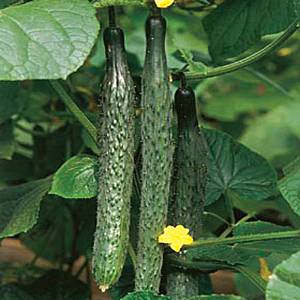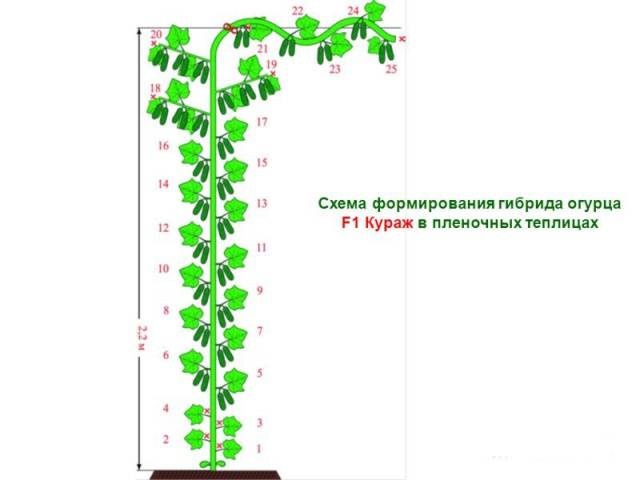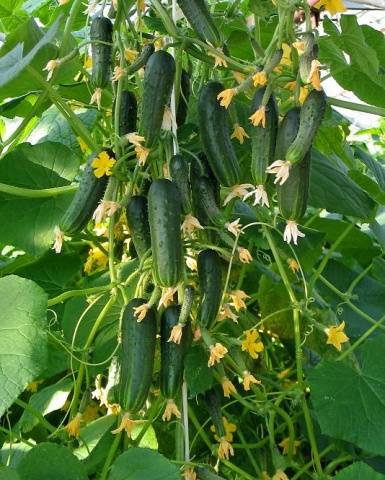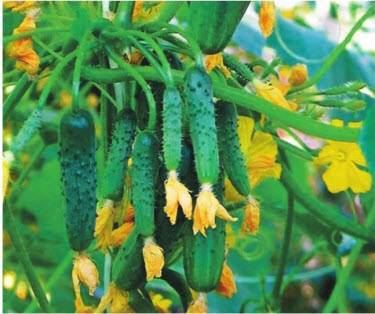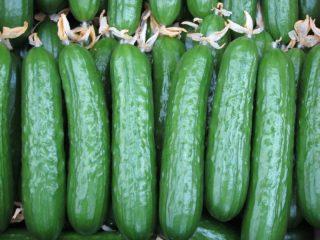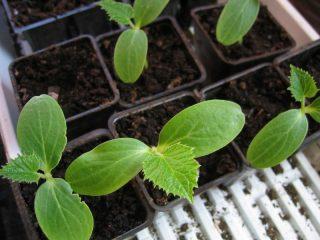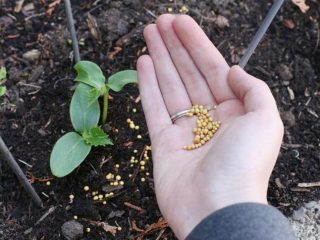Content
Recently, the weather has become more and more unpredictable and therefore it is possible to get a high yield of cucumbers if only they are planted in a greenhouse.
At the moment, there are a huge number of varieties and hybrids on the seed market intended for cultivation in greenhouses. It is quite difficult for a person who is ignorant of this matter to navigate this diversity. So, below are the best varieties of cucumbers for greenhouses and requirements for them.
Requirements for greenhouse varieties of cucumbers
Agrotechnics for growing cucumbers in a closed field is somewhat different from open agricultural technology. Therefore, the requirements for varieties will be different. For growing in a greenhouse, preference should be given to hybrids that do not require additional formation, that is, their lateral lashes have limited growth and do not have to be pinched. In the future, this will avoid unnecessary thickening, which can lead to outbreaks of diseases such as powdery mildew and stem rot.
The next thing to look out for is the type of pollination. Parthenocarpic and self-pollinated hybrids give the best results for greenhouse cultivation.
Also varieties for greenhouses must be resistant to most diseases, because the microclimate of the greenhouse strongly contributes to their occurrence. They also have to put up with high humidity, low light and temperature extremes.
Classification of greenhouse cucumbers
All varieties and hybrids intended for indoor use by Zelentsy can be divided into 3 large groups:
- Salad, with a dense skin and sweetish pulp.
- For conservation, with a thin skin, through which saline or marinade easily passes. A distinctive feature of this type is dark thorn and strong tuberosity.
- Universal, are suitable for fresh consumption and blanks.
Therefore, before choosing seeds, you first need to decide on the purpose of the future harvest. If you mostly just eat fresh cucumbers, then you should choose salad varieties. If you need greens for pickling or pickling, then preference should be given to canned food, and if you plan to use fresh products and preservation, then you need universal ones.
It is possible to classify zelents by ripening terms for:
- Early, which, in turn, are divided into super-early and mid-early. The first fruits from them can be obtained in a month from the moment of germination. They need to be sown in several terms, since after 1.5 months they practically cease to bear fruit.
- Mid-season. This group enters fruiting after the early one.
- Late ripening.
According to the type of pollination, this vegetable can be divided into parthenocarpic varieties and self-pollinated ones. Many vegetable growers mistakenly classify them as one group, which is absolutely not true. They differ from each other in that the former do not need a pollination process for the formation of zelents, they have no seeds at all, and the latter have both a pistil and a stamen in one flower, so they can pollinate themselves. What they have in common is that they do not need insect pollinators to set greens.
Parthenocarpic varieties
New varieties appear on the seed market every year parthenocarpic cucumbers... Below, according to the reviews of vegetable growers, are the best of them.
| Name | Ripening period | Appointment | Fruit size in cm | Disease resistance | Ovary location |
|---|---|---|---|---|---|
| Cupid F1 | Early ripe | Universal | 15 | Average | Bouquet |
| Emelya F1 | Early ripe | Salting | 13-15 | High | Bouquet |
| Herman F1 | Ultra-ripe | Universal | 8-10 | High | Bouquet |
| Hercules F1 | Early ripe | Universal | 12-14 | Average | Bouquet |
| Mother-in-law F1 | Early ripe | Cannery | 11-13 | High | Bouquet |
| Zyatek F1 | Early ripe | Cannery | 9-11 | High | Bouquet |
| Cheetah F1 | Early ripe | Universal | 11-13 | High | Bouquet |
| Mazay F1 | Ultra-ripe | Universal | 10-15 | High | Bouquet |
| Trump F1 | Early maturing | Universal | 10-12 | High | Bouquet |
| Grasshopper F1 | Ultra-ripe | Universal | 10-12 | High | Bouquet |
| Marinda F1 | Early ripe | Universal | 8-10 | High | Bouquet |
| Courage F1 | Early ripe | Universal | 8-10 | High | Bouquet |
All the varieties of parthenocapic cucumbers presented above are suitable for growing in a greenhouse.
Self-pollinated varieties
It is very difficult to navigate among the large number of self-pollinated varieties; the most popular of them are presented in the form of a table below.
| Name | Ripening period | Appointment | Fruit size in cm | Disease resistance | Ovary location |
|---|---|---|---|---|---|
| Zozulya F1 | Early ripe | Universal | 25 | Average | Single |
| Matilda F1 | Early ripe | Universal | 10-12 | Average | Bouquet |
| Gerda F1 | Early ripe | Universal | 8-10 | High | Bouquet |
| Friendly family F1 | Early ripe | Canning | 10-12 | High | Bouquet |
| Ant F1 | Early ripe | Universal | 8-10 | High | Bouquet |
Self-pollinated hybrids are less productive than parthenocapic hybrids, but nevertheless, with appropriate care, they are able to give a bountiful harvest.
Tips for choosing seeds
The harvest of cucumbers directly depends on the quality of the seeds. In order not to be mistaken in the selection and acquisition process, you need to adhere to the following recommendations:
- Growing cucumbers in the greenhouse very different from their cultivation in the open field. Therefore, preference should be given to varieties and hybrids intended for indoor use.
- First of all, when buying seeds, you should choose hybrids. They are indicated on the packaging as F1. Under the same growing conditions, they will show better results compared to varieties.
- Don't dwell on just one variety. You can buy several with similar requirements and plant them in the same greenhouse. Then you will definitely not be left without a crop.
- Varieties with mild branching have an advantage over those with strong tillering. They do not need additional formation.
- It is advisable to buy the seed that is zoned in your region.
Regardless of the variety, in order to obtain a good harvest, it is required to observe the agricultural technology of cultivating this crop.
The following video will help with the choice of a specific variety:
